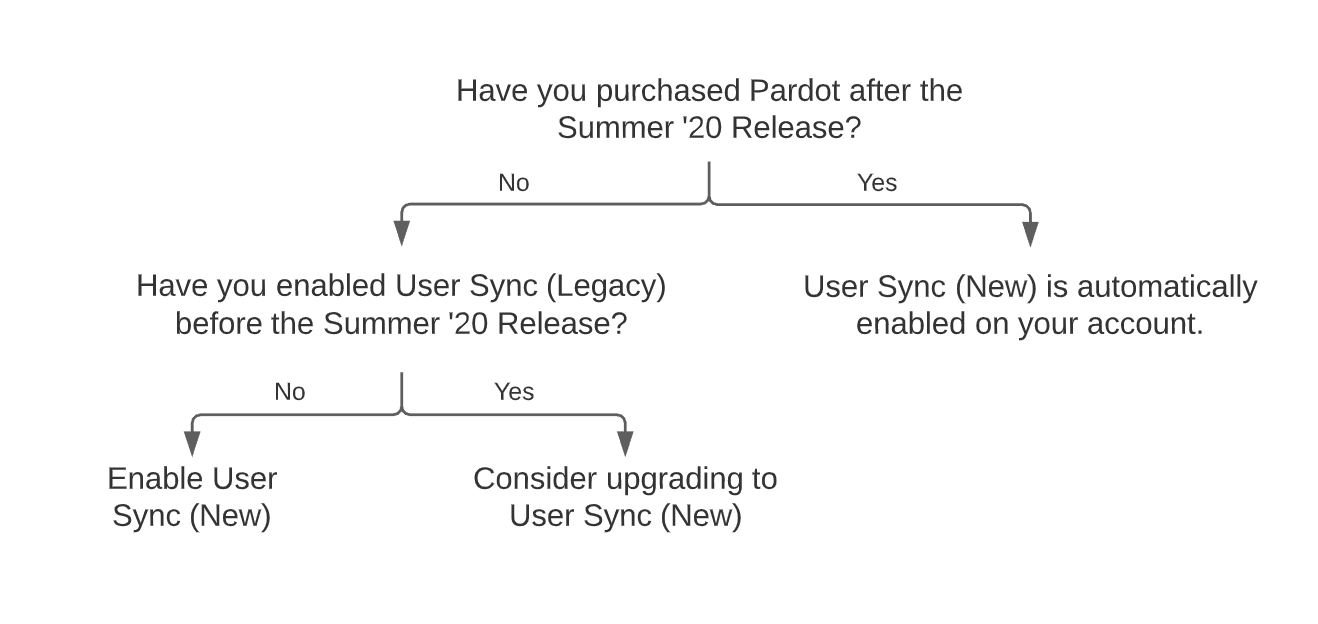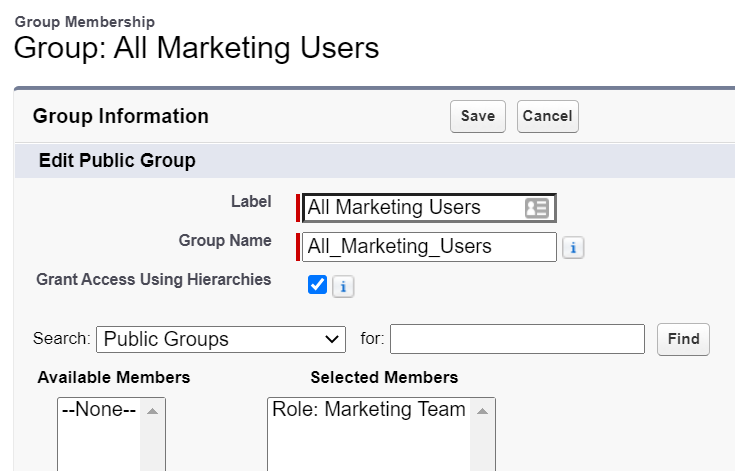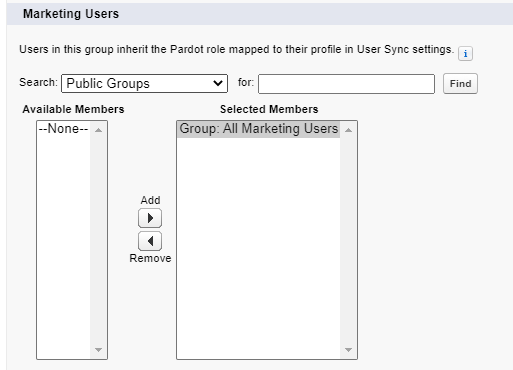Salesforce User Sync is an excellent feature that lets you create and manage your Pardot users in Salesforce. After you have mapped your Pardot and Salesforce users to prepare for Pardot User Migration, the process to enable Salesforce User Sync is not that complicated. But before you configure it, take a look at our considerations and recommendations.
Legacy vs New User Sync
The Legacy User sync has been available since 2018 and connected the two platforms while giving some flexibility with Pardot access. If you haven’t implemented any version of User Sync before, you now only have the option to enable the New version of User Sync.
With the Legacy version, admins are able to change the Pardot role on a one by one basis for each user in Pardot. With the New User Sync this is no longer possible, as the access is defined based on Salesforce profiles. If this is something that is essential for you, consider carefully whether you’d benefit from this upgrade.
The diagram below can help you find out if you have user sync, whether that is Legacy or New, and what your next steps should be.

New User Sync Configuration
Have you decided to go ahead with the configuration? That is awesome, here is what you’ll need.
1. Salesforce Profile – Pardot Role Mapping
When enabling User Sync you need to define which Salesforce Users should be created in Pardot as Users. The Profile to Role Map that was set as part of the previous User Sync enablement project will continue to define what Pardot Role they are given once added to Pardot.
Work with your team to map Salesforce profiles to Pardot roles. For example, you can have the following mapping:
| Salesforce Profile | Pardot Role |
| Sales User | Sales Manager |
| Marketing User | Marketing |
| Pardot Admin* | Administrator |
| System Administrator | Administrator |
* Since the Pardot administrator might not be an admin in Salesforce you should create a new profile in Salesforce, dedicated for Pardot Admins.
2. Manage users in Salesforce
When the mapping is defined, configure which Salesforce users should be created in Pardot. This is done using any of the following:
- Individual Users (would require manual updates in the future)
- Roles & Subordinates
- Public Groups
Speak to your Salesforce admin to understand which of these options would be the best option, in case you would like to select who should access Pardot. For example, if you are using Roles in your Salesforce instance, you can provide access only to users with the ‘Marketing users’ role:

So first, decide with your team who should access Pardot and how that will be managed in Salesforce. Then ask your Salesforce admin to navigate to the Pardot Account Settings section and click on the Manage Users button.
Under the Marketing Users section select the option you’d like to follow, and then add the specific user / role / public group to the selected members.

3. Enable User sync in Pardot
Make sure all your users have the right Salesforce profile, which will define the level of their Pardot access. When you are 100% sure everything is correct, go to the Salesforce connector settings in Pardot and enable v2 user sync at the ‘User Sync’ section.
After a couple of minutes, the sync will be set and you can complete the configuration by setting the Salesforce profile – Pardot role mapping.
Then your work as a Pardot admin will be one task simpler in the future, as your users will be fully in sync – just like the clocks above.
***
If you are unsure if your user sync is enabled or need help with the configuration, get in touch with our team. We have Pardot and Salesforce experts who can advise on the best steps for you.

